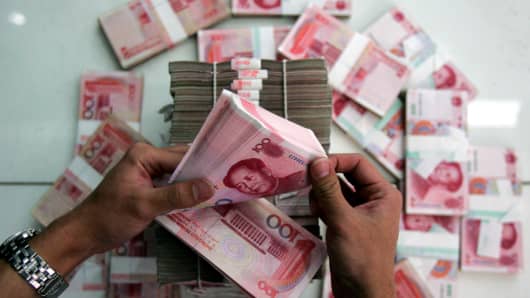When Goldman Sachs economists wanted to bring their global clients up to speed on the risks in China's credit boom, they spoke to Charlene Chu, the Fitch Ratings analyst known for her bearish views.
Ms Chu has studied China's shadow finance sector to come up with one of the highest estimates of the country's debt pile at more than 200 percent of gross domestic product. She also warns that the banking sector is far more exposed to many of the shadow loans than most people realize.
The latest official figures show non-performing loans (NPLs) at Chinese banks grew by Rmb 13 billion ($2 billion) in the second quarter to Rmb 540 billion, increasing for a seventh straight quarter.
(Read more: China Banks May Need 'Tape' to Hold Together)
More than a decade ago, Beijing set up four state-funded asset management companies (AMCs) to take over the bad debts of the four biggest state-owned banks. After a rocky start, the bad banks have become adept at working out problem loans in only the past couple of years, according to bankers.
Profit figures are hard to come by for these privately held companies, but Trevor Kalcic, analyst at CIMB, reckons their combined return on equity has increased from 8.9 percent in 2009 to 15.5 percent last year. He also calculates that the four saw total pre-tax profits grow by 29 percent last year.




